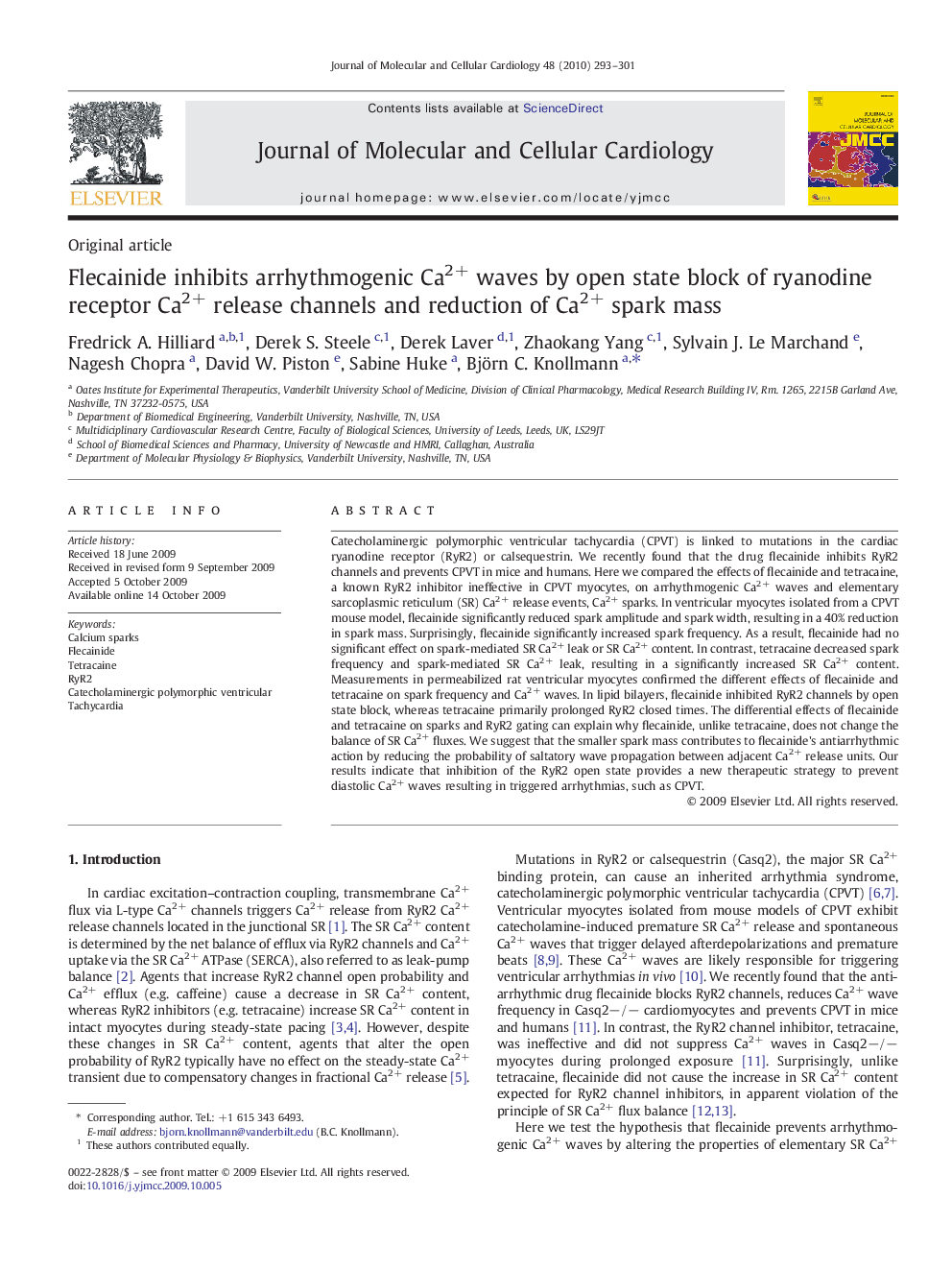| Article ID | Journal | Published Year | Pages | File Type |
|---|---|---|---|---|
| 2191036 | Journal of Molecular and Cellular Cardiology | 2010 | 9 Pages |
Catecholaminergic polymorphic ventricular tachycardia (CPVT) is linked to mutations in the cardiac ryanodine receptor (RyR2) or calsequestrin. We recently found that the drug flecainide inhibits RyR2 channels and prevents CPVT in mice and humans. Here we compared the effects of flecainide and tetracaine, a known RyR2 inhibitor ineffective in CPVT myocytes, on arrhythmogenic Ca2+ waves and elementary sarcoplasmic reticulum (SR) Ca2+ release events, Ca2+ sparks. In ventricular myocytes isolated from a CPVT mouse model, flecainide significantly reduced spark amplitude and spark width, resulting in a 40% reduction in spark mass. Surprisingly, flecainide significantly increased spark frequency. As a result, flecainide had no significant effect on spark-mediated SR Ca2+ leak or SR Ca2+ content. In contrast, tetracaine decreased spark frequency and spark-mediated SR Ca2+ leak, resulting in a significantly increased SR Ca2+ content. Measurements in permeabilized rat ventricular myocytes confirmed the different effects of flecainide and tetracaine on spark frequency and Ca2+ waves. In lipid bilayers, flecainide inhibited RyR2 channels by open state block, whereas tetracaine primarily prolonged RyR2 closed times. The differential effects of flecainide and tetracaine on sparks and RyR2 gating can explain why flecainide, unlike tetracaine, does not change the balance of SR Ca2+ fluxes. We suggest that the smaller spark mass contributes to flecainide's antiarrhythmic action by reducing the probability of saltatory wave propagation between adjacent Ca2+ release units. Our results indicate that inhibition of the RyR2 open state provides a new therapeutic strategy to prevent diastolic Ca2+ waves resulting in triggered arrhythmias, such as CPVT.
